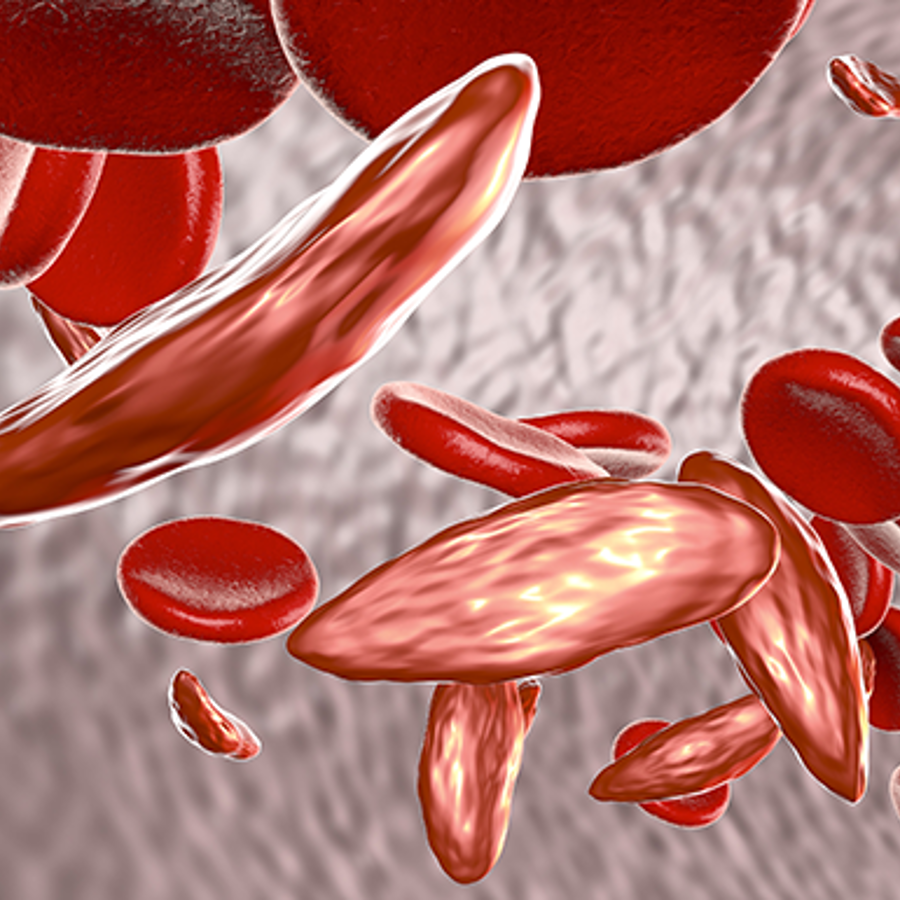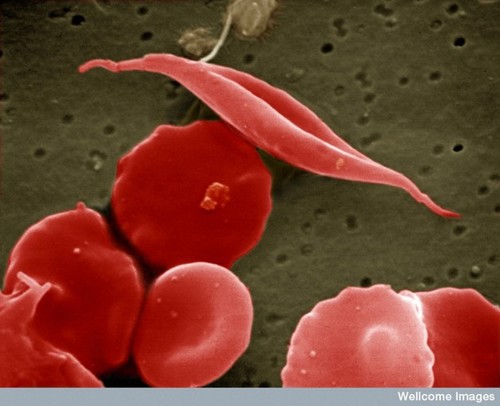
How do scientists cure sickle cell disease?
July 18, 2017

- Related Topics:
- Autosomal recessive inheritance,
- Stem cells,
- Gene therapy,
- Genetic conditions
A middle school student from New Hampshire asks:
"How do scientists cure sickle cell disease?"
Not very easily! Right now a cure involves a bone marrow transplant and these things are pretty dangerous.
According to this publication, 15% of young sickle cell patients don’t survive the transplant.1
The numbers are so bad for older people that it isn’t usually even offered to them.
And even if you are young and strong enough for a bone marrow transplant, you still may not get one. You need to find a match and there aren’t a lot of them out there. Even a brother or sister has only a 1 in 4 chance of being a match!
Some new research suggests that there may be a way around this last problem. In this new approach they fix a patient’s bone marrow cells and put them back in the patient. The cells match because they are the patient’s own cells.
Back in March, 2017, a group of scientists reported that this new approach seems to have worked for a teenager with sickle cell.2 We will have to wait and see if this can become a new way to cure lots of people of their sickle cell.
Sickle Cell is a Disease of the Blood
Curing disease is hard, but it is easier if we know exactly what the problem is. Sickle cell disease is one of the diseases where scientists do know the cause.
It is a disease of the blood. As you probably already know, blood is very important for keeping you alive.
It carries oxygen to every part of your body. Without a constant supply of oxygen, your body would not be able to work.
In a healthy person, blood cells are shaped like a disc and can easily move around the body. Blood cells in people with sickle cell sometimes end up shaped like a crescent moon. This blood gets stuck and cannot easily reach the body!
This isn’t the only problem with these cells. They also die quickly. This means people with sickle cell have fewer blood cells than people who do not have the disease.
People are born with this disease. It causes severe pain, delayed development, and frequent infections.

Since sickle cell is a problem with the blood, it makes sense that a cure would involve replacing a patient’s blood. As you may have guessed, the way they do this is with a bone marrow transplant.
There are cells in our bone marrow called blood stem cells that make all the blood in our body. In a bone marrow transplant, the patient’s blood stem cells are replaced with ones that don’t cause the disease.
So we can replace them with the right donor but if there is no donor, we have to try to fix the patient’s blood cells. Which means we need to know what is wrong with them.
Why these people’s blood acted the way it did remained a mystery until 1959. This is when scientists found that sickle cell disease was caused by a single genetic mutation.
A Genetic Mutation is a Glitch in the DNA
DNA is the instructions needed to build life and is found in every living thing. Sickle cell is caused by a tiny difference in one small part of a patient’s DNA. This tiny difference is called a genetic mutation.
I like to think of DNA as an instruction booklet that comes with a Lego set. If I wanted to build a Lego helicopter, I would follow the instructions. And when nature wants to build a you, it follows the instructions in your DNA.
The instructions for making that helicopter are actually a bunch of individual instructions. “Place the green square above the helicopter window.” “Connect the rotor.” And so on.
If there is a typo in one of these instructions, you can run into problems. Or not.

Some typos don’t matter. For example, let’s say “Place the rotor above the helicopter window” instead said “Place the rotor above helicopter window.” Here, a single word was removed (the), but you can still follow the instructions.
Other typos can be devastating. For example, let’s say that instead of “Place the rotor above the helicopter window” it said “Place the above the helicopter window.” Here, a single word was removed (rotor), but you no longer know what piece to place! Now your helicopter can’t fly!
Our DNA instructions are like the Lego ones in that they too are a set of individual instructions. Each of these individual instructions is called a gene.
With genes, a typo goes by the name mutation. And the one in sickle cell is more like the one where rotor is removed in our helicopter instructions. It causes big problems.
Fixing the Typo in Sickle Cell
Fixing the typo in sickle cell is a tricky process, although it can be done. To make the process easier, scientists just add a copy of the correct instructions. They add a copy of the gene that does not lead to sickle cell.
Scientists use viruses to add a copy of the gene with the right instructions. These viruses naturally insert DNA into human cells and so are the perfect tools for this “gene therapy.”
It turns out it is impossible to add a working copy to enough blood cells directly. No, we need to add the gene to cells that make the red blood cells. These “blood stem cells” or “hematopoietic stem cells” are found in the bone marrow.
Scientists recently removed stem cells from the bone marrow of a person with sickle cell disease. They then added in a working copy of the gene. Next, they removed the rest of the patient’s blood stem cells and replaced them with the cells that were fixed.

The person now makes blood cells that won’t sickle anymore! Unfortunately, this is not a complete cure, and some blood cells still don’t work properly.
What’s important though is that enough blood cells work for the person to no longer have the disease. But because only the blood cells were changed, the person can still pass the disease onto his or her children.
This is a very new approach. Before being able to do this, scientists took healthy cells from a sibling. This meant that every patient needed a sibling that didn’t have the disease.
With this new method, anyone who can survive a bone marrow transplant can be cured!

Author: Kristen Wells
When this answer was published in 2017, Kristen was a Ph.D. candidate in the Department of Genetics, studying gene regulation in autoimmune disease in Lars Steinmetz's laboratory. She wrote this answer while participating in the Stanford at The Tech program.
 Skip Navigation
Skip Navigation
